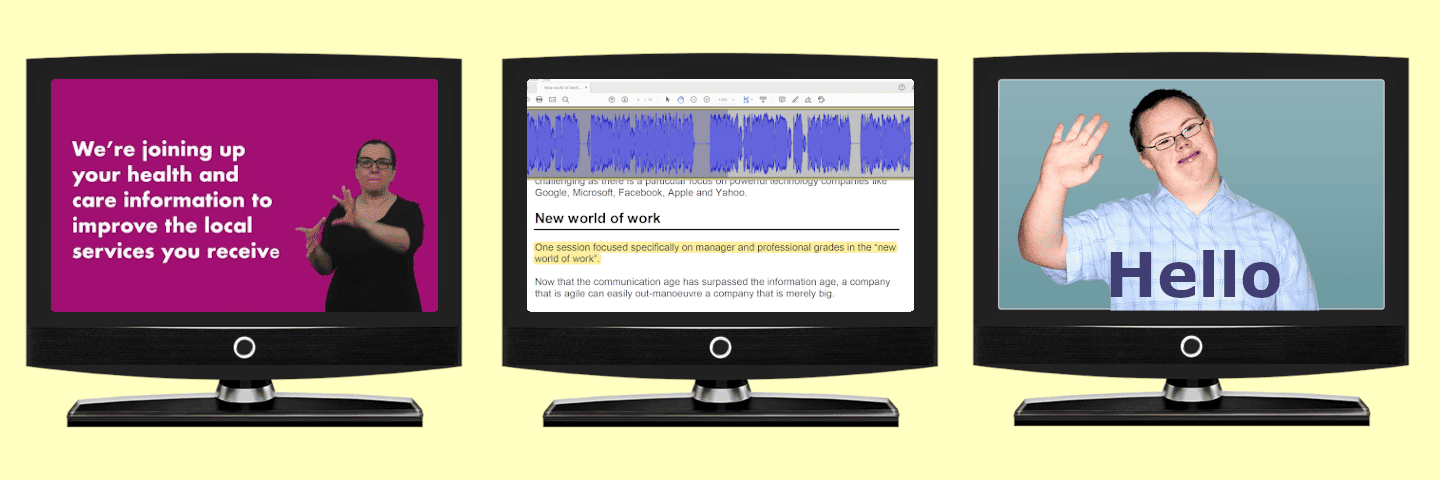28 July 2020
Risk Assessments, Covid-secure guidelines, Return to work information
Many places are now re-opening, and after much work to create a safe environment it’s time to communicate new procedures to your employees, volunteers, customers and visitors.
Are you making sure you’re communicating to everyone?
In almost every sector, management have carried out Risk Assessments and made many changes to ensure safety is prioritised. No-one wants a second wave, and we all want to get back to a sense of normality.
The documentation is there. Now it’s time to implement it and advertise our premises and venues as COVID-secure.
But please don’t forget those with disabilities who need alternative formats. Vital information needs to be communicated with everyone. There has been much in the media recently about the lack of information for certain groups. Please read below to make sure you have thought of all the formats you might need.
The formats you need depend on your readership – you don’t necessarily need every format. Start by considering who uses your services, who works for you, and who visits – then think about whether any of these people may have difficulty accessing or understanding your standard materials.
Think specifically about the likelihood of people who are blind, deaf or who have learning disabilities needing to access your information.
Here’s some formats that you might want to consider…
- Easy Read – it’s really important that people with learning disabilities feel safe and understand what they should be doing. Easy Read versions make information clearer, and can be developed as documents or videos. See our customer portfolio for some Easy Read samples including a document about COVID-19.
- E-Text – any documents that are read digitally, such as PDFs, ePubs and Docx, can be made accessible. This means that blind people who are reading them with the help of adaptive software can access them too.
- BSL videos – if you’re communicating more with videos, consider adding Sign Language.
- Audio – why not publish an audio version of your communications online? You can email copies to specific customers, or just send them the link. Or Audio CDs may be appropriate.
- Braille – this is the preferred method of communication for many people with sight loss and sometimes it’s the only way that they will be able to access vital information.
- Large Print – used by many people with different forms of sight loss or dyslexia, Large Print means more than enlarging the font and includes adaptation of text, tables and graphics so that they can be accessed by the highest number of readers possible.
Can we help you with production?
Our highly experienced transcription staff are experts in adapting documents into a variety of formats. After you’ve done the hard work of creating your documentation, we can turn it into any format you need.
Please just get in touch with us at
Email: info@a2i.co.uk
Web: www.a2i.co.uk
Telephone: 01179 44 00 44
Or use our quick quote form

